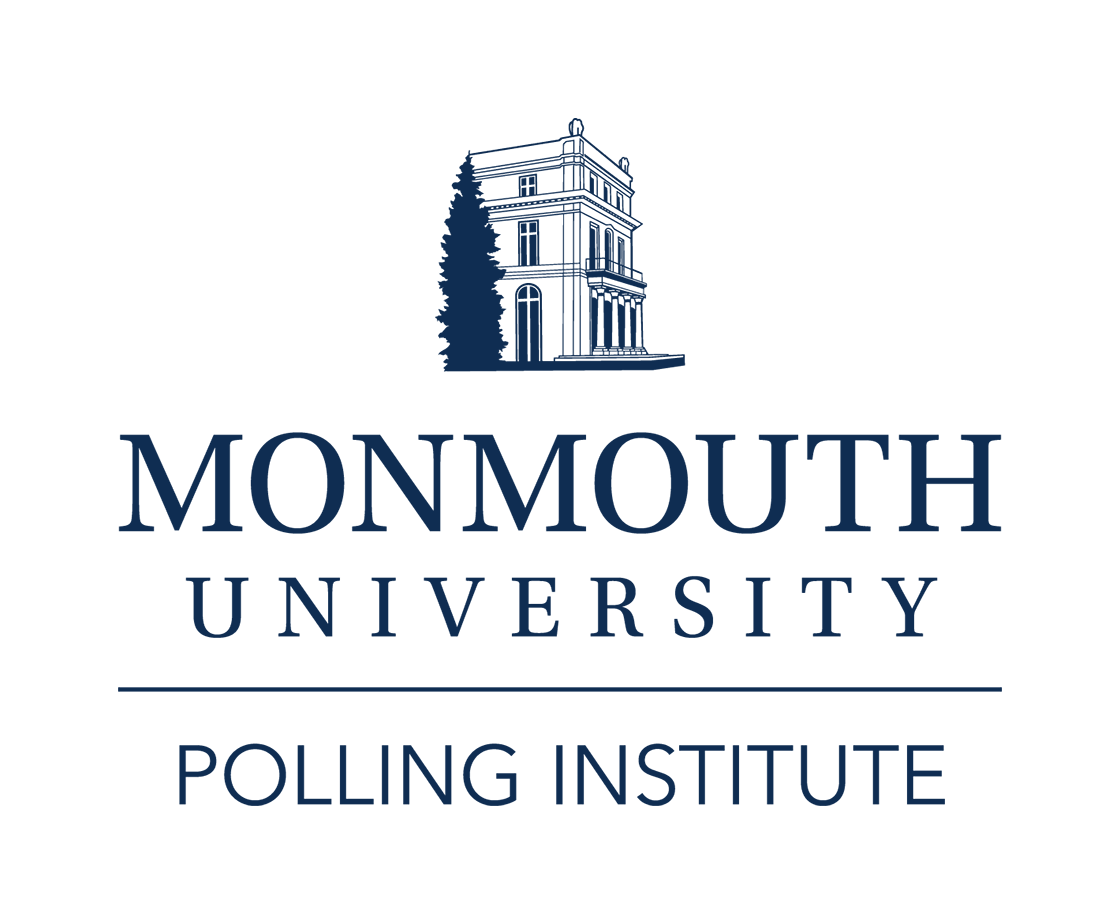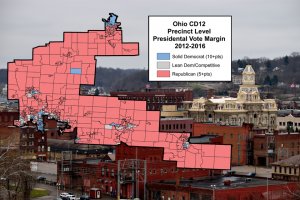West Long Branch, NJ – Ohio may be John Kasich’s last stand as a presidential candidate, but he appears to be making the most of it. The Monmouth University Poll finds the Buckeye State governor with a slim 5 point lead over Donald Trump in the Republican contest there. On the Democratic side, Hillary Clinton holds a 14 point lead over Bernie Sanders.
— Republican primary —
John Kasich currently has the support of 40% of likely GOP primary voters in his home state of Ohio, with Donald Trump close on his heels at 35%. Ted Cruz has a 15% vote share and Marco Rubio claims just 5% of the vote.
Kasich has a solid lead among political moderates – 54% to 30% for Trump – while Trump is winning the very conservative vote with 37% support to 26% for Kasich and 26% for Cruz. The somewhat conservative vote splits 40% for Kasich and 39% for Trump. Trump has a 44% to 34% advantage over Kasich among voters earning less than $50,000 a year. The two candidates are basically tied – 36% Kasich and 34% Trump – among voters earning between $50,000 and $100,000. However, Kasich has a 48% to 28% lead among those who make $100,000 or more.
The poll suggests that Kasich would be having an easier time in his home state if he was able to face Trump in a head-to-head contest. In a hypothetical two-person race, 52% of likely primary voters say they would back the governor compared to 40% who would vote for Trump.
“The Ohio race is tight, but with Rubio floundering in Florida, Kasich could potentially bolster his standing as the establishment’s alternative to Trump and Cruz with a win here,” said Patrick Murray, director of the independent Monmouth University Polling Institute. [Monmouth released poll results for the Florida GOP primary earlier today showing Rubio trailing Trump by 17 points there.]
The Ohio governor earns widespread kudos from Republican voters in his home state, but that does not necessarily translate to unanimous support for his presidential bid. More than 8-in-10 likely GOP primary voters approve of the job Kasich is doing as Ohio’s chief executive, including 43% who strongly approve and 39% who somewhat approve. Just 16% disapprove. Among those who strongly approve of Kasich’s current job performance, 57% back him for president, but 26% say they are voting for Trump. Among those who somewhat approve of the governor, 38% back Kasich and 33% are voting for Trump. A majority (61%) of the small group who disapprove of Kasich’s job performance are backing Trump.
“Kasich must be saying to himself, ‘What’s a guy got to do to earn a promotion around here?’” said Murray.
In terms of overall voter commitment, 8% of Republican voters have already cast their ballots and 45% say they are completely decided on their candidate choice before they head to the polls. Another 29% have a strong preference but are still open to considering other candidates. Nearly 1-in-5 either have only a slight preference (8%) or are basically undecided (11%) just days before Tuesday’s election. Similar levels of Trump voters (60%) and Kasich supporters (55%) say they have already voted or that their choice is locked in. In prior primary states polled by Monmouth, Trump voters have tended to be much more committed than the supporters of the other candidates.
Kasich called out Trump after violence broke out at a planned Trump rally in Chicago Friday night. Poll respondents interviewed on Saturday and Sunday were asked how that incident affected their vote intentions. Most (67%) say it had no impact on their support, while the remainder are about evenly divided between saying it made them more likely (16%) or less likely (14%) to support Trump.
If Trump emerges as the GOP nominee, fewer than two-thirds of Ohio Republicans (64%) say they would get behind him in a general election against Hillary Clinton. Another 10% would actually vote for Clinton, 12% would vote for an independent or 3 rd party candidate, 6% say they would not vote at all, and 7% are not sure what they would do. Only 43% of Kasich supporters say they would definitely vote for Trump in the general election while 19% say they would vote for Clinton.
One-in-ten (10%) likely Republican primary voters say they have given serious consideration to voting in the Democratic primary instead of the GOP contest, including 14% of Kasich voters and 7% of Trump supporters. This group would be somewhat more likely to back Sanders over Clinton if they did in fact choose the other party’s ballot on Tuesday.
— Democratic primary —
In Ohio’s Democratic primary, Hillary Clinton currently holds a 54% to 40% lead over Bernie Sanders. Clinton enjoys a solid edge among non-white voters (66% to 24%), who make up one-fourth of the likely electorate. Clinton also has a small 51% to 45% lead among non-Hispanic whites. Clinton leads among both women (56% to 37%) and men (53% to 44%) in Ohio. Sanders leads among voters under the age of 50 (58% to 36% for Clinton), but Clinton has a solid 73% to 22% advantage among voters age 50 and older.
One-in-ten voters (12%) say they have already cast their ballots in the Democratic primary and another 43% say they have completely decided on their candidate choice. Another 22% have a strong preference but are willing to consider the other candidate, 12% have just a slight preference, and 11% are really undecided at this point. Similar levels of Clinton voters (60%) and Sanders supporters (54%) say they have already voted or that their choice is locked in.
“Clinton currently has a lead in Ohio. There is the possibility that some Democrats may decide to take a Republican ballot in order to support their governor, but these voters are more likely to be Sanders supporters than Clinton backers,” said Murray.
A small but significant 17% of likely Democratic primary voters say they have given serious consideration to voting in the Republican primary instead. This includes 23% of Sanders supporters and 12% of Clinton backers. If they did decide to take the other party’s ballot, a majority say they would cast their vote for John Kasich. The Ohio governor has relatively healthy ratings among Democratic voters, with more than half (52%) approving of his job performance and just 41% disapproving.
Donald Trump, though, is not so popular. In a general election match-up featuring Trump as the Republican nominee, 83% say they would vote for Clinton if she was the Democratic standard bearer and just 5% would vote for Trump, with 6% voting independent, 3% who would not vote, and 3% who are unsure what they would do. Replace Clinton with Sanders and 80% would back Sanders to 4% for Trump, with 2% voting independent, 9% who would not vote, and 5% who are unsure what they would do.
The Monmouth University Poll was conducted by telephone from March 11 to 13, 2016 with 503 Ohio voters likely to vote in the Republican presidential primary and 302 Ohio voters likely to vote in the Democratic presidential primary. The Republican likely primary voter sample has a margin of error of ± 4.4 percent and the Democratic likely primary voter sample has a margin of error of ± 5.6 percent. The poll was conducted by the Monmouth University Polling Institute in West Long Branch, NJ.
DATA TABLES
The questions referred to in this release are as follows:
(* Some columns may not add to 100% due to rounding.)
ASKED OF LIKELY REPUBLICAN PRIMARY VOTERS:
R1. If the Republican primary election for president was today, would you vote for – [NAMES WERE ROTATED]
| March 2016 | |
| John Kasich | 40% |
| Donald Trump | 35% |
| Ted Cruz | 15% |
| Marco Rubio | 5% |
| (VOL) Other | 1% |
| (VOL) Undecided | 4% |
| (n) | (503) |
R2. Which of the following best describes where your decision stands at this moment: I am completely decided on which candidate I will support, I have a strong preference right now but I am willing to consider other candidates, I have a slight preference among a group of candidates I like, or I am really undecided among a number of candidates?
| March 2016 | |
| Already voted early | 8% |
| Completely decided | 45% |
| Strong preference | 29% |
| Slight preference | 8% |
| Undecided | 11% |
R3. If it came down to the following two candidates, who would you support – [NAMES WERE ROTATED]
| March 2016 | |
| Donald Trump | 40% |
| John Kasich | 52% |
| (VOL) Neither | 3% |
| (VOL) Undecided | 4% |
R4. Have you seriously considered voting in the Democratic primary instead of the Republican primary, or have you not really given this serious consideration?
| March 2016 | |
| Yes, seriously considered | 10% |
| No, not seriously considered | 89% |
| (VOL) Don’t know | 1% |
[QUESTION R5 WAS INCLUDED SAT-SUN, n=324, moe +/-5.5%]
R5. As you may know, Donald Trump cancelled a rally in Chicago Friday night where protesters and his supporters got into confrontations. Does what happened there and Trump’s response to it make you more likely or less likely to support Trump, or does it have no impact on your vote for the Republican nomination?
| Mid-March 2016 | |
| More likely | 16% |
| Less likely | 14% |
| No impact | 67% |
| (VOL) Don’t know | 3% |
R6. If Donald Trump became the Republican nominee and Hillary Clinton became the Democratic nominee, who would you vote for in the general election in November – Trump, Clinton, an independent candidate or would you not vote for president?
| March 2016 | |
| Donald Trump | 64% |
| Hillary Clinton | 10% |
| Independent candidate | 12% |
| Would not vote | 6% |
| (VOL) Undecided | 7% |
R7. How would you rate the job John Kasich is doing as governor – do you strongly approve, somewhat approve, somewhat disapprove, or strongly disapprove?
| March 2016 | |
| Strongly approve | 43% |
| Somewhat approve | 39% |
| Somewhat disapprove | 8% |
| Strongly disapprove | 8% |
| (VOL) Don’t know | 2% |
ASKED OF LIKELY DEMOCRATIC PRIMARY VOTERS:
D1. If the Democratic primary election for president was today, would you vote for – [NAMES WERE ROTATED]
| March 2016 | |
| Hillary Clinton | 54% |
| Bernie Sanders | 40% |
| (VOL) Other | 1% |
| (VOL) Undecided | 4% |
| (n) | (302) |
D2. Which of the following best describes where your decision stands at this moment: I am completely decided on which candidate I will support, I have a strong preference right now but I am willing to consider other candidates, I have a slight preference among a group of candidates I like, or I am really undecided among a number of candidates?
| March 2016 | |
| Already voted early | 12% |
| Completely decided | 43% |
| Strong preference | 22% |
| Slight preference | 12% |
| Undecided | 11% |
D3. Have you seriously considered voting in the Republican primary instead of the Democratic primary, or have you not really given this serious consideration?
| March 2016 | |
| Yes, seriously considered | 17% |
| No, not seriously considered | 82% |
| (VOL) Don’t know | 1% |
[QUESTIONS D4 & D5 WERE ROTATED]
D4. If Donald Trump became the Republican nominee and Hillary Clinton became the Democratic nominee, who would you vote for in the general election in November – Trump or Clinton or an independent candidate, or would you not vote for president?
| March 2016 | |
| Donald Trump | 5% |
| Hillary Clinton | 83% |
| Independent candidate | 6% |
| Would not vote | 3% |
| (VOL) Undecided | 3% |
D5. If Donald Trump became the Republican nominee and Bernie Sanders became the Democratic nominee, who would you vote for in the general election in November – Trump or Sanders or an independent candidate, or would you not vote for president?
| March 2016 | |
| Donald Trump | 4% |
| Bernie Sanders | 80% |
| Independent candidate | 2% |
| Would not vote | 9% |
| (VOL) Undecided | 5% |
D6. How would you rate the job John Kasich is doing as governor – do you strongly approve, somewhat approve, somewhat disapprove, or strongly disapprove?
| March 2016 | |
| Strongly approve | 11% |
| Somewhat approve | 41% |
| Somewhat disapprove | 19% |
| Strongly disapprove | 22% |
| (VOL) Don’t know | 8% |
The Monmouth University Poll was sponsored and conducted by the Monmouth University Polling Institute from March 11 to 13, 2016 with a statewide random sample of Ohio voters drawn from a list of registered voters, who participated in a primary election in 2012 or 2014 or voted in both of the last two general elections or have registered since 2014, and indicate they will vote in the presidential primary on March 15, 2016. Monmouth is responsible for all aspects of the survey design, data weighting and analysis. Final sample is weighted for age and gender based on state registration list information on the pool of voters who participate in primary elections. Data collection support provided by Braun Research (field) and Aristotle (voter list). The total sample of 805 likely voters includes 481 contacted by a live interviewer on a landline telephone and 324 contacted by a live interviewer on a cell phone, in English.
For results based on the sample of 503 likely Republican primary voters, one can say with 95% confidence that the error attributable to sampling has a maximum margin of plus or minus 4.4 percentage points (unadjusted for sample design). For results based on the sample of 302 likely Democratic primary voters, one can say with 95% confidence that the error attributable to sampling has a maximum margin of plus or minus 5.6 percentage points (unadjusted for sample design). Sampling error can be larger for sub-groups (see table below). In addition to sampling error, one should bear in mind that question wording and practical difficulties in conducting surveys can introduce error or bias into the findings of opinion polls.
| POLL DEMOGRAPHICS (weighted) | ||
| LIKELY REPUBLICAN PRIMARY VOTERS | ||
| 54% Male | 12% 18-34 |
95% White |
| 46% Female | 28% 35-49 |
1% Black |
| 36% 50-64 |
2% Hispanic | |
| 24% 65+ |
2% Other | |
| POLL DEMOGRAPHICS (weighted) | ||
| LIKELY DEMOCRATIC PRIMARY VOTERS | ||
| 44% Male | 20% 18-34 |
75% White |
| 56% Female | 31% 35-49 |
19% Black |
| 30% 50-64 |
4% Hispanic | |
| 19% 65+ |
2% Other | |
Click on pdf file link below for full methodology and results by key demographic groups.



